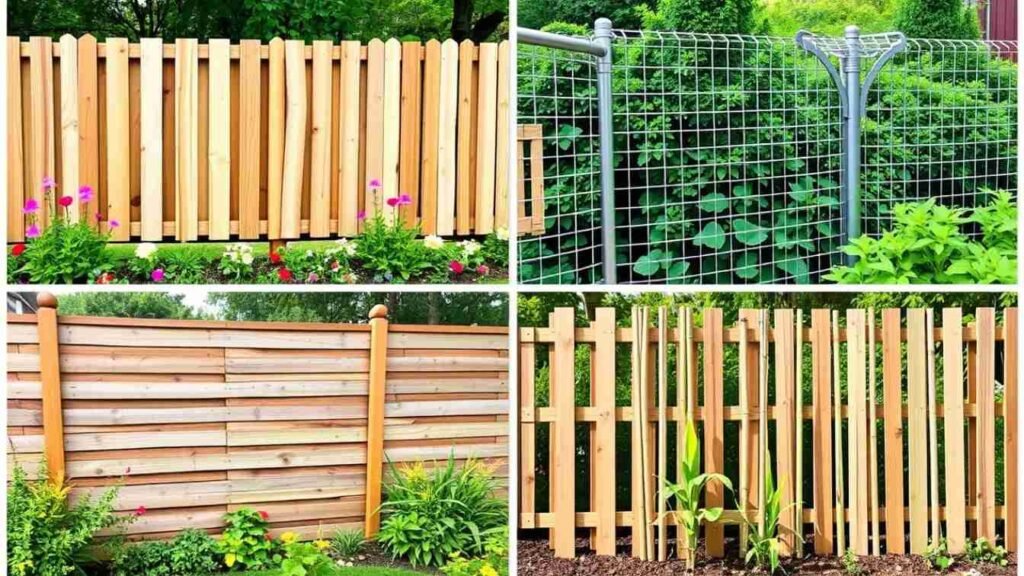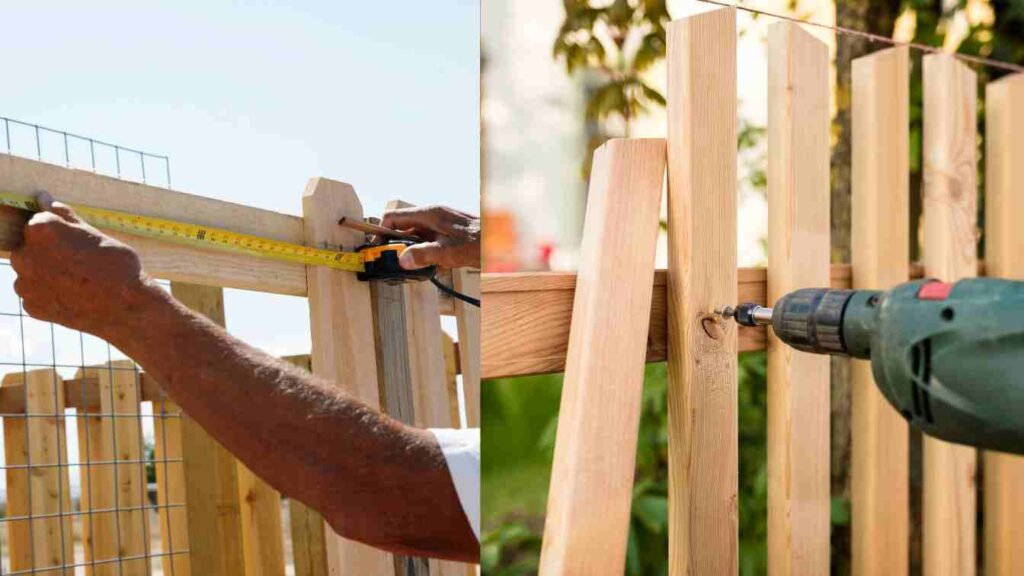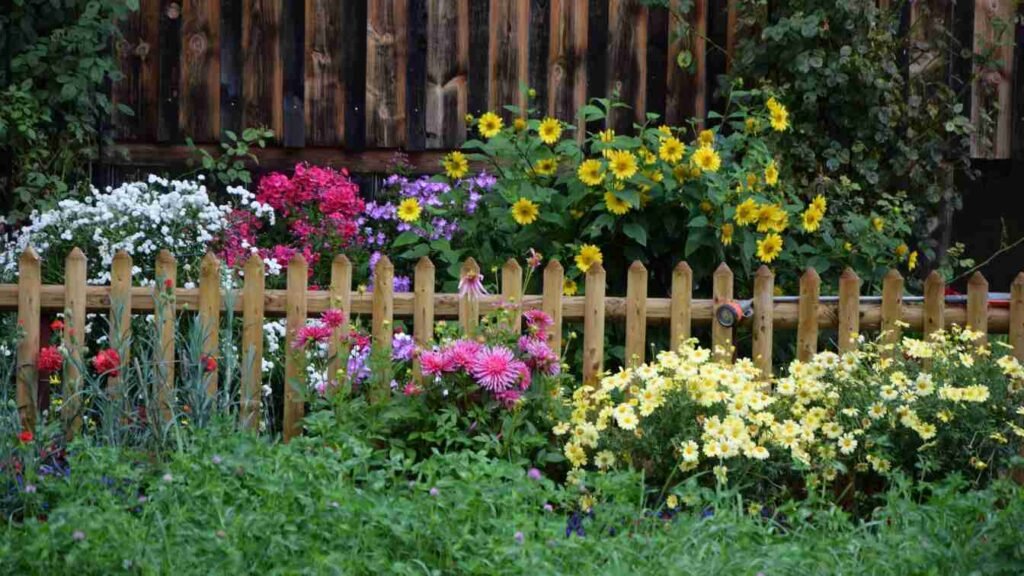A garden fence is more than just a boundary; it’s a protective barrier that keeps pests out, provides privacy, and adds beauty to your outdoor space. Whether you want to secure your plants from animals or create a charming decorative touch, a DIY garden fence is a cost-effective and rewarding project. In this guide, we’ll explore various types of DIY garden fences, step-by-step building instructions, and creative ideas to suit every garden and budget.
Why Build a DIY Garden Fence?
- Protects Your Plants – Keeps rabbits, deer, and other animals away.
- Defines Garden Space – Creates a clear boundary for your garden.
- Adds Visual Appeal – Enhances the overall look of your outdoor space.
- Improves Privacy – Shields your garden from neighbors or passersby.
- Cost-Effective – DIY fencing is much cheaper than hiring professionals.
- Increases Property Value – A well-built garden fence adds curb appeal and may boost property worth.
- Enhances Safety – Keeps pets and children within a secure space.
Types of DIY Garden Fences

1. Wooden Garden Fence
- Made from cedar, pine, or reclaimed wood.
- Can be a picket fence, panel fence, or horizontal slat fence.
- Offers a rustic or modern look depending on design.
2. Wire Mesh Fence
- Ideal for keeping small animals out.
- Works well with wooden or metal posts.
- Affordable and easy to install.
3. Bamboo Fence
- Sustainable and aesthetically pleasing.
- Great for privacy and wind protection.
4. Pallet Fence
- Budget-friendly option using recycled pallets.
- Can be arranged in different patterns for a unique look.
5. Wattle Fence
- Made from woven branches or sticks.
- Provides a natural and eco-friendly appearance.
Materials & Tools Needed
Materials:
- Wood (cedar, pallet wood, bamboo)
- Metal wire (chicken wire, welded wire mesh)
- PVC or recycled materials (old doors, window frames, metal sheets)
- Concrete mix (for securing posts)
- Hinges & locks (if building a fence with a gate)
- Brackets and screws (for added stability)
- Weatherproofing sealant or stain
Tools:
- Hammer & nails
- Power drill
- Measuring tape
- Saw
- Level tool
- Paintbrush or sprayer
- Post hole digger
Learn how to build your own garden bed using simple tools and materials.
Step-by-Step Guide to Building a DIY Garden Fence

1. Choose the Right Fence Type
Decide whether you need a decorative, protective, or privacy fence. This will determine the materials and height of your fence.
2. Measure & Plan the Layout
Use stakes and string to outline the fence area. Mark where the posts will go, considering space for a gate if needed.
3. Prepare the Ground & Install Fence Posts
- Dig holes for posts (typically 12-24 inches deep).
- Secure posts with concrete for stability.
- Let the concrete dry for at least 24 hours before proceeding.
4. Attach the Fencing Material
- For Wooden Fences: Nail or screw wooden panels onto the posts.
- For Wire Fences: Stretch the wire mesh tightly and staple it to the posts.
- For Recycled Materials: Secure doors or windows creatively for a unique fence.
5. Add a Gate (If Needed)
- Use hinges and a latch for easy access.
- Ensure the gate swings freely and aligns with the fence.
6. Apply Finishing Touches
- Paint or stain wood to protect against weather damage.
- Add decorative elements like climbing plants or solar lights.
Creative & Budget-Friendly DIY Garden Fence Ideas

1. Rustic Wooden Fence
- Use reclaimed wood or pallet boards for an eco-friendly option.
- Stain or paint for a polished look.
2. Chicken Wire Fence
- Affordable and great for keeping small animals out.
- Combine with wooden posts for a sturdy structure.
3. Bamboo Garden Fence
- Provides a natural look and is highly sustainable.
- Can be secured with wire or wooden framing.
4. Recycled Material Fence
- Use old doors, windows, or even metal sheets.
- Creates a unique and artistic fence with minimal cost.
5. Living Fence (Hedge or Vine Fence)
- Use climbing plants like ivy or jasmine on a trellis.
- Natural privacy screen that improves air quality.
Common Mistakes to Avoid
Using untreated wood – Leads to rot and damage over time. Not securing posts deep enough – Makes the fence unstable. Leaving gaps too wide – Allows small animals to sneak in. Ignoring weatherproofing – Can cause wood to deteriorate quickly. Choosing the wrong materials – Not all woods or wires are suitable for outdoor use.
Maintenance Tips for a Long-Lasting Fence
- Regularly check for loose nails or weak posts.
- Apply a protective sealant every year.
- Replace damaged sections as needed.
- Keep vines and plants from overgrowing the structure.
- Inspect for termite or mold damage and treat accordingly.
Frequently Asked Questions (FAQs)
1. What is the cheapest DIY garden fence?
- A pallet fence or chicken wire fence is the most budget-friendly option.
2. How tall should a garden fence be?
- For rabbits and small pests, 2-3 feet is sufficient.
- For deer and larger animals, aim for 6-8 feet.
3. Can I use recycled materials for a garden fence?
- Yes! Old doors, windows, pallets, and metal sheets work great.
4. How do I make my garden fence more decorative?
- Use paint, hanging planters, or trellises with vines for added charm.
5. How long does a DIY garden fence last?
- With proper maintenance, a wooden fence can last 10-20 years, and a wire fence can last even longer.
Conclusion
Building a DIY garden fence is a fun and practical project that enhances your garden’s security and beauty. Whether you prefer a classic wooden fence, a budget-friendly wire fence, or a creative recycled-material fence, the options are endless. With the right materials and careful planning, you can build a long-lasting fence that complements your outdoor space. Get started today and enjoy a well-protected, stylish garden space!

